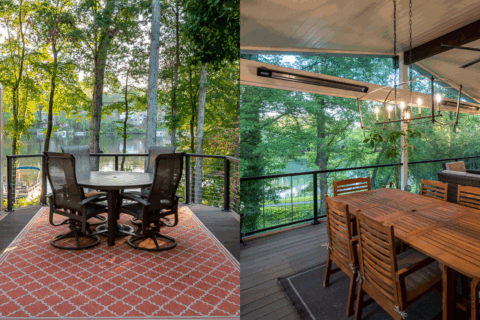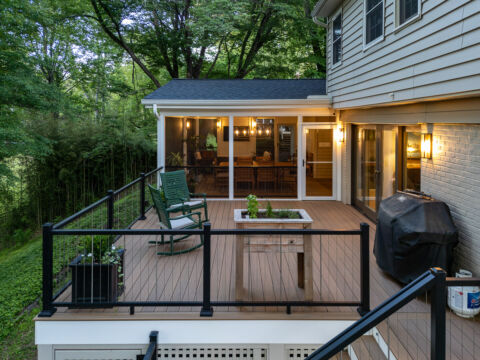Cable Railing for Decks & Porches: Which Type is Best?
If you want to make the most of your view, cable railing is a sleek option for decks and porches. It’s especially appealing if you like contemporary design. Because the cabling is all-aluminum, it won’t rust and will stay looking great for years.
But which style is best for your space? Let’s break down the options.

Horizontal Cable Railing
Horizontal cable railing has been a favorite since the 1970s, when it moved from ships and airplanes into home design. It offers a clean look, but it comes with a higher price tag and more maintenance.

Pros
- Modern lines that maximize your view
- Adds a strong wow factor to outdoor spaces
- Works especially well for decks with aluminum railing posts
Cons
- Cables loosen over time, and re-tensioning is expensive
- Creates a climbing hazard for children and pets
- Not ideal for porches that require wooden posts to meet building code
Installation Considerations
- Typical runs are 40–70 feet long with multiple turns that increase the risk/frequency of tension loss
- Using composite or PVC post sleeves will increase the risk of tension loss because each material expands and contracts differently
- Best results come from using aluminum railing posts that perform better and maintain the minimalist look, but are not compatible with porches
If you love the look but want less maintenance, vertical cable railing may be a better choice.
Vertical Cable Railing
Vertical cable railing is a newer option that’s quickly gaining popularity. It’s more affordable, requires less upkeep, and works for both screened and unscreened porches.

Pros
- Easier DIY re-tensioning with standard tools
- Safer for children and pets
- Ideal for decks and porches
Cons
- Newer product with less long-term performance history
- Not as well-known as horizontal cable railing
- Vertical lines can interrupt water views
Installation Considerations
- Runs are under 3 feet with no turns, which reduces the risk/frequency of tension loss
- Can be used with non-aluminum posts without increasing maintenance
- More compatible with wooded views where vertical lines blend naturally with tree trunks
Choosing Between Horizontal and Vertical
Both options open up your view and create a contemporary design element. Your decision comes down to setting, budget, and maintenance tolerance. Choose horizontal if you have a water view, a higher budget, and you’re okay with more maintenance. Choose vertical if you have a wooded view and want a more affordable and lower-maintenance option. With proper expectations, you will be very happy with either style of cable railing. Contact Us and we’ll walk you through the options so you can pick the right solution for your space.
